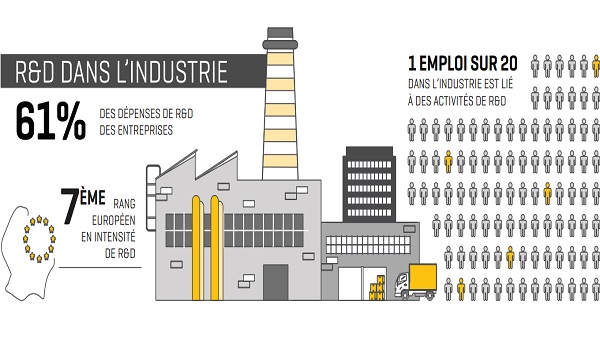 Credit: STATEC
Credit: STATEC
In its latest report, STATEC revealed that 1 in 20 industry jobs in Luxembourg are linked to research and development (R&D).
In 2019, Luxembourg ranked 19th in the European Union (EU) for R&D intensity (1.19%, based on preliminary data). However, Luxembourg industry invested heavily in R&D, reaching 6.7% of added value and around 5% of industrial employment (3rd place in Europe). For innovation, over the period 2016 to 2018, Luxembourg met the EU average since half of companies (50.6%) were innovative.
In business, R&D intensity in Luxembourg (0.60%) was less than half of the EU as a whole (1.42%), sliding the country to 18th place in Europe.
In 2017, although less diversified in its activities than most of its European neighbours, industry was the main branch in terms of R&D, making up 61% of the total internal R&D expenditure of companies. Luxembourg thus ranks 7th in Europe, with one in 20 jobs in Luxembourg industry being linked to R&D activities.
The R&D staff of companies in Luxembourg was made up of 48% technicians and 39% researchers.
As in other EU countries, R&D activities were mostly carried out by large companies (73% in 2017). As a result, general R&D activity in Luxembourg remains relatively sensitive since more than half of total R&D expenditure in the business sector is the result of a few more active companies.
In terms of innovation, business process innovations were the most frequent (for 79.3% of innovative companies), ahead of product innovations (60.1%). While one in two Luxembourg companies was innovative, this proportion increased with the size of the company: 77.7% of companies with 250 or more employees carried out innovation activities over the period from 2016 to 2018.
However, innovation activities were not necessarily successful. More than one innovative company in eight (12.0%) said they had abandoned or suspended a project involving innovation activities between 2016 and 2018.
Finally, innovative companies were most hampered in their approach by a lack of qualified employees at the heart of their business, an obstacle recognised by 71.5% of such companies. Companies that did not innovate said they had other priorities. This was the motive most cited by non-innovative companies (42.6%), which seemed to reveal a lower need for them to innovate.








